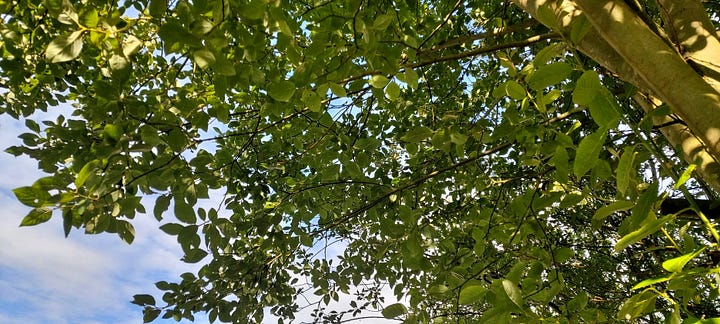
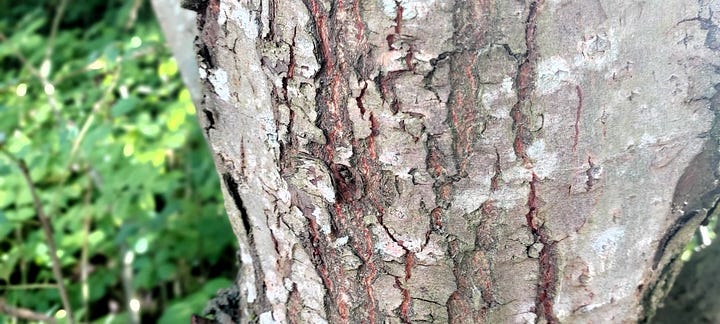
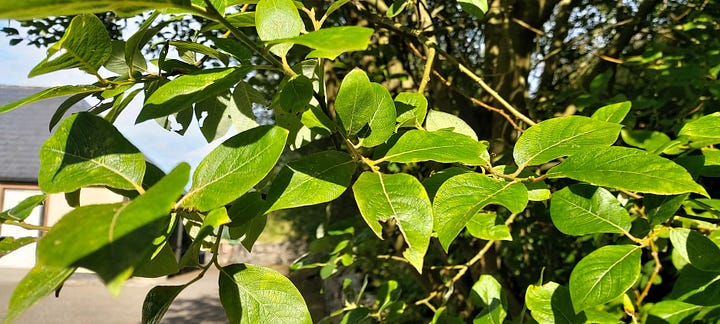
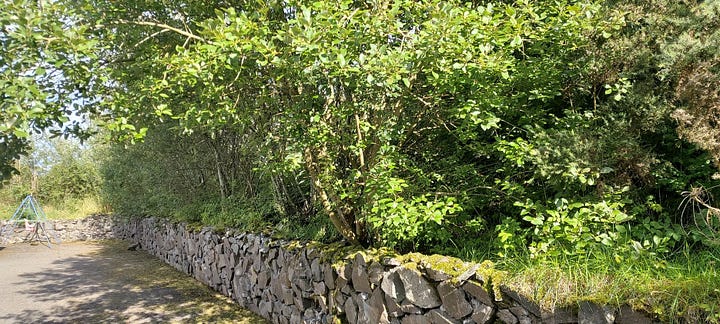
bare earth
When we came to this house on a hill, the earth had been scraped away during the building of it, leaving an acre of muddy ooze that appeared to be completely barren. We were deeply drawn to this space, even though we were ‘gazumped’ three times. But eventually, it came to us. The hill was surrounded by trees, and gave us a magnificent view out over the valley. Now, the trees have grown so much that they have become the view. We get to enjoy the best sunsets and sunrises (although we don’t generally see many of the latter!), and in the autumn and winter we are bathed in the silver clarity of starlight, a benefit that only comes from a lack of streetlights.
I am totally captivated by this beautiful film and enchanting song about the willow maid by Erutan from her album, Raindancer. You can buy her music on her website.
gatecrashers
We planted our muddy patch, giving space to dogwood and dog rose, guelder rose and yellow gorse, rowan, blackthorn and hawthorn. It wasn’t long before other plants crept in of their own accord to join them and fill the gaps, such as flowering currant, blackberry, rosebay willowherb… they were, and are, all welcome. But arguably our most successful ‘intruders’ are the willows. They populated the bankings very quickly, surrounding our home with movement and grace and whispering song, and with them came the birds and butterflies.
Two years ago, with so much willow around me, I decided to learn how to weave baskets. I was at first disappointed to discover that the grey and goat willow that had gathered here is not considered suitable for weaving, lacking the flexibility to bend without breaking, a fact I find impossible to believe when I see them dance. But just being in their presence, watching them move, brings me joy, and I am grateful for the transformation they have brought to this tiny scrap of earth. The willows found me, and they have become the backdrop of my life.
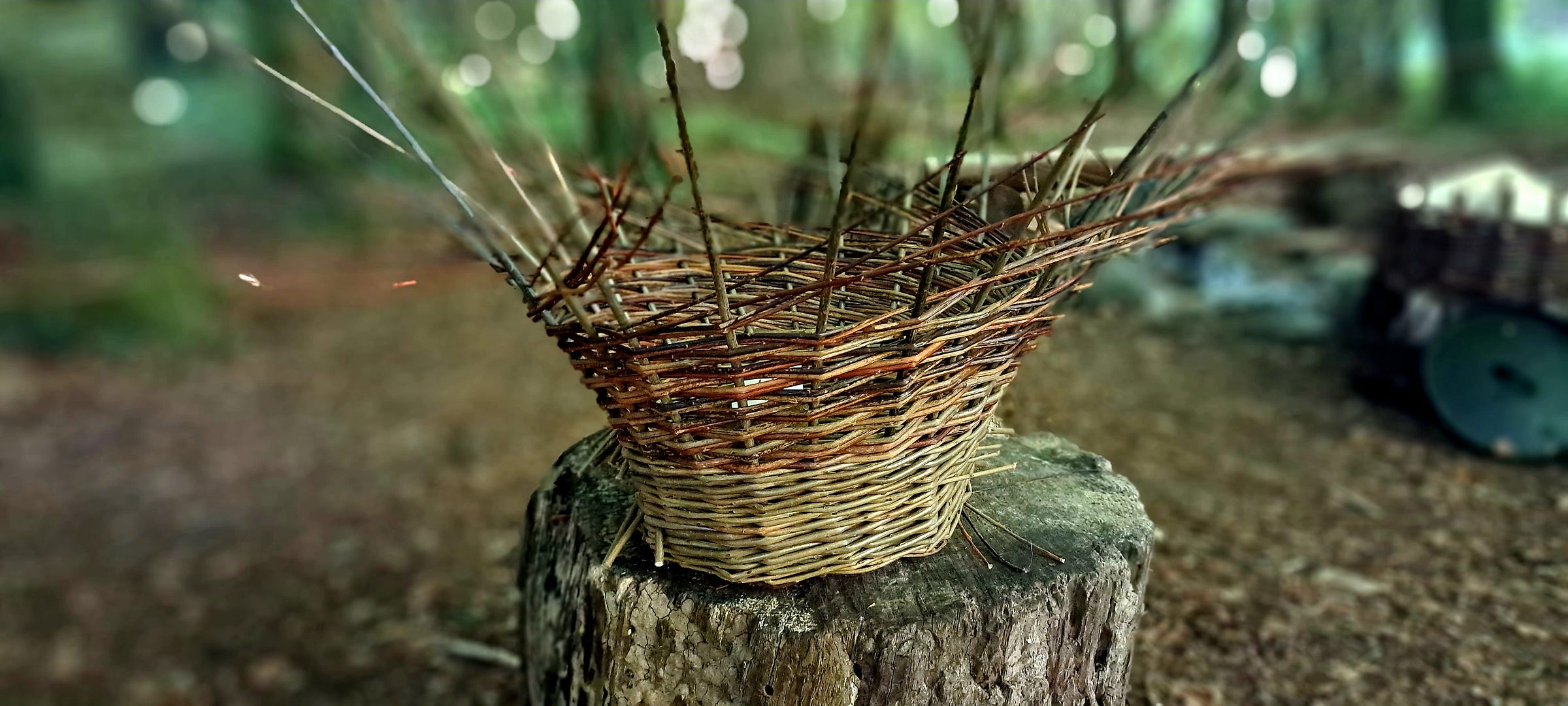
Céad míle fáilte, a hundred thousand welcomes to H A G! I’m Ali Isaac, and this email comes to you from the intersection of female senescence and Irish landscape, both mythical and natural. My book, Imperfect Bodies, will be published by Héloïse Press in the spring of 2026.
wild kin
71% of our planet’s surface is covered in water. Our bodies contain on average 60% water, although up to 73% can be found in the brain and heart. I, however, am 95% water, so it’s no wonder I found myself surrounded by willows. My inner water table lies very close to the surface, rising often in floods of tears, or hot flushes and sweats, or a bladder that needs emptying far too frequently.
The willow and I are attracted to each other, like to like. Wild kin. And they have much to teach me.
sympathetic sister
In Irish, the willow is known as sail/ sailleach, and represents the fourth character, Saille, of the first family of the Beith-Luis-Nin, the ‘alphabet’ of the Ogham script once used in early Christian Ireland.
This name for willow is believed to come from the Latin ‘salix’, but there is a theory that this in itself actually derives from an amalgamation of two old Celtic words, sal meaning ‘near’ and lis meaning ‘water’;1 I don’t know how true this is, but knowing the nature of the willow, it makes perfect sense to me, because willow loves to grow in damp soil. This is why you often see them growing alongside rivers; this is of mutual benefit, because as the roots penetrate deeply for water, in the process they provide a firm latticework of support that stabilises the river banks.
The willow has abundant, watery sap in spring which allows for fairly easy harvesting of the bark. Once removed, the bark can be rolled and dried, and stored for weaving. The sap contains salycilic acid, which is the active agent in the medicine, aspirin. Willows are really useful friends to insects and birds, too, their catkins being among the first to appear as early as February, offering early sustenenace to pollinators. Willows are among the last to lose their leaves, often holding on as late as December. I always imagine they are reluctant to enter their winter slumber, as they are so exuberant and full of joy during the middle seasons of light.
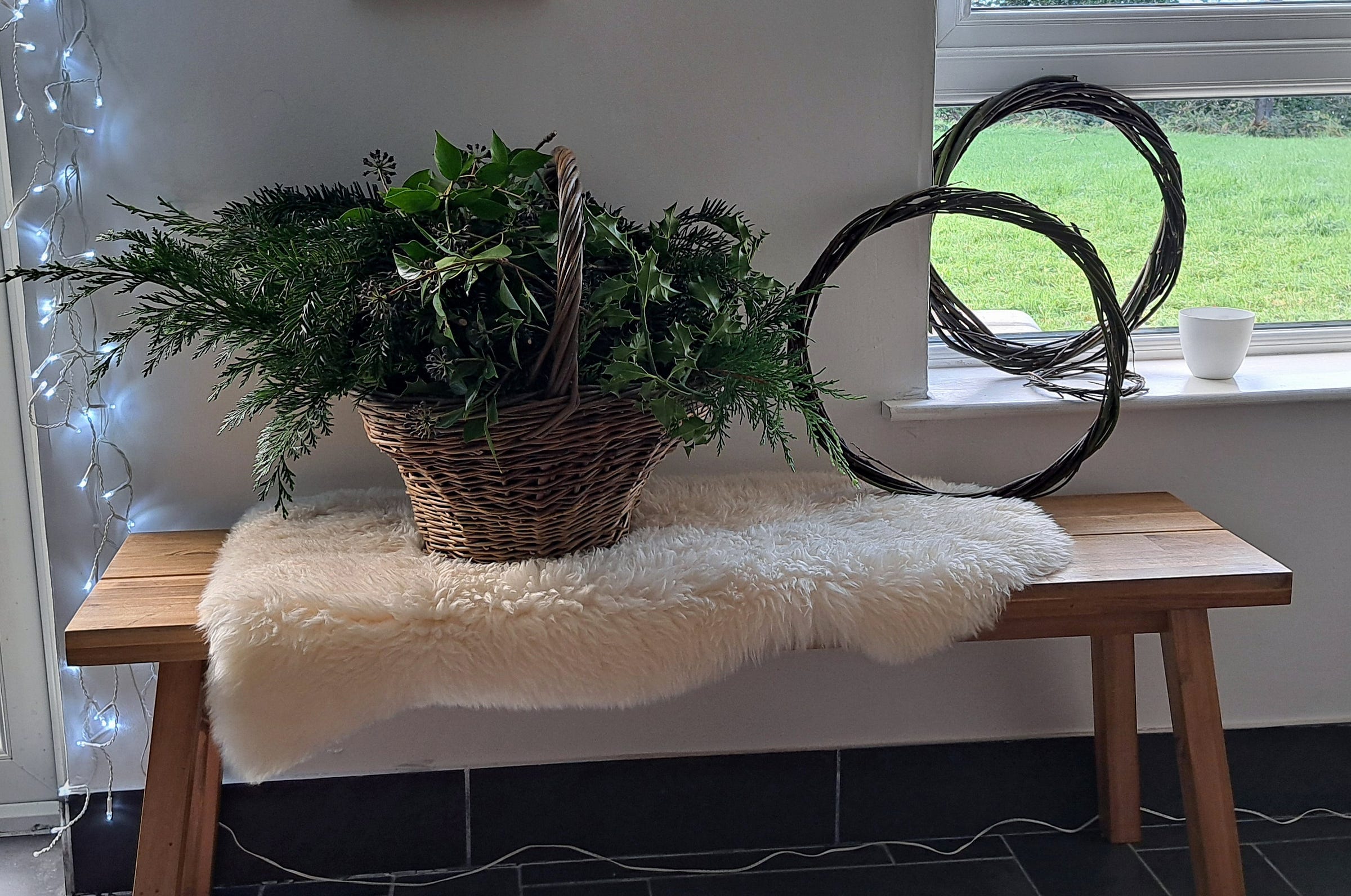
Willows can be coppiced to provide long flexible stems that can be harvested in autumn for weaving. Although grey and goat willow, which are native here, are thought to be too brittle for weaving, I have made some lovely winter wreaths from them, and recently used them to weave a 1m diameter circular raised bed for my herbs, and they were perfect for this. Thicker branches can be harvested for logs that burn well when seasoned. I burn mine in my firepit, but I store the logs in my shed for a year before use. Willow rods can also be made into charcoal for drawing, although I have never tried this.
Because the willow comes into her greenery so early in Spring, I associate her with Brigid and therefore the festival of Imbolc, her season of emergence and growth. And as you can see, she is more than generous in her many gifts to humankind, and also to her plant and animal kin.
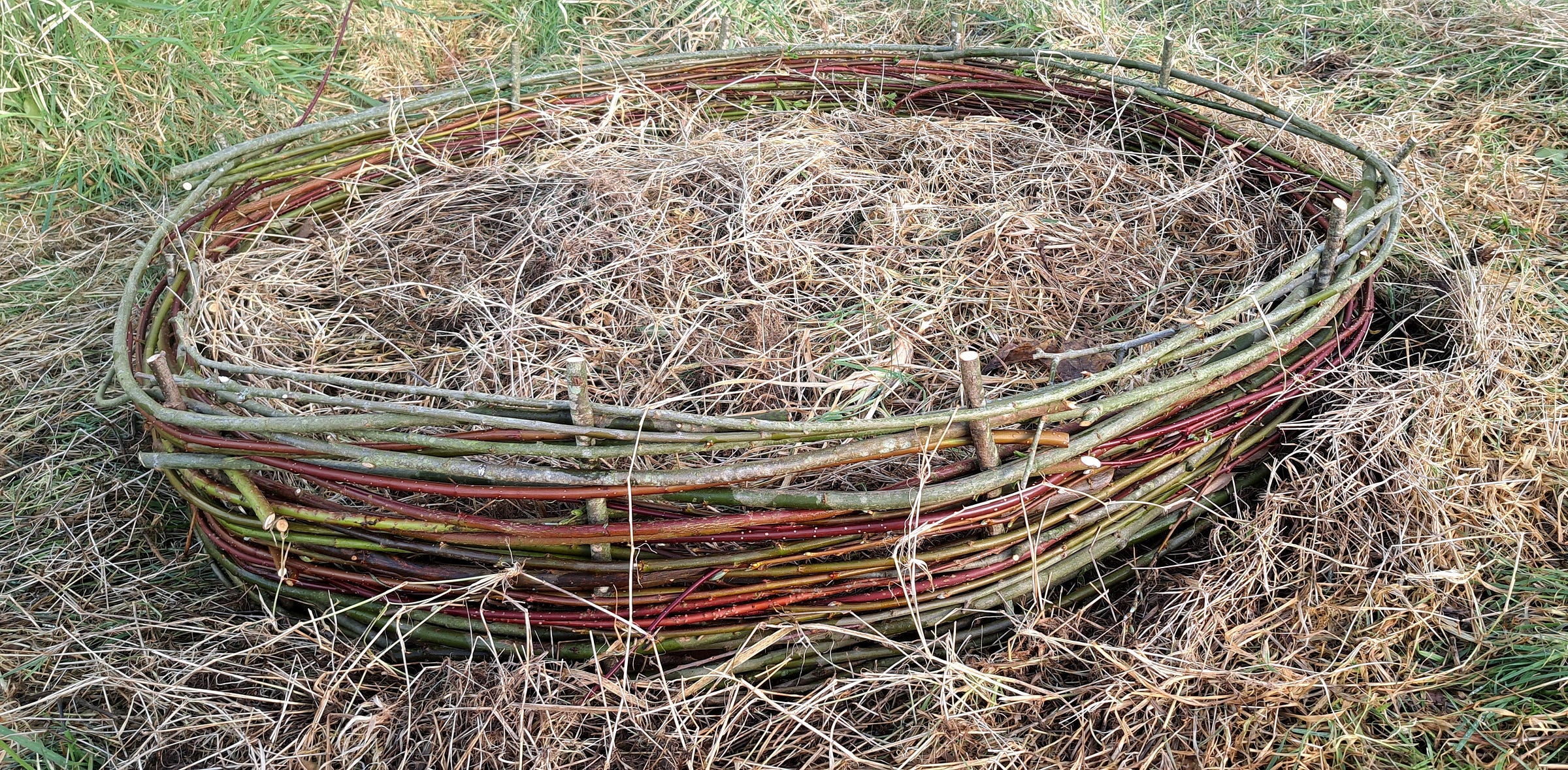
milk-fruit, the goddess boan, & the milky way
The willow does not bear fruit that we’d recognise, or eat. It develops catkins in early spring, which when pollinated produce little capsules containing seed. These are the fruit, which burst when mature, dispersing the seed. While willow catkins, particularly that of the goat willow, are certainly edible, they are said to be very bitter. I cannot confirm this, as although my willows are abundant catkin producers, I have never been tempted to try them.
According to Nial mac Coitir, in Irish folkore it is told that St. Kevin of Glendalough once cared for a sick boy.2 As he prayed for the boy to regain his health, a nearby willow tree began to produce fruit that were white and oblong in shape. These fruit, which were called ‘the milk-fruit of Kevin’ were healing and nourishing, and importantly, neither flavourful or bitter. Bland, like milk, you might say. St Kevin used these fruit to nurse the boy back to full health. They were subsequently found to cure various other illnesses, too.
This story is interesting, firstly because of the medicinal properties of willow bark, which contains salicin, a natural substance that in the body is converted into salicylic acid, a pain-relieving chemical. A synthetic version is used in aspirin. Coupled with its anti-bacterial and anti-inflammatory properties, willow therefore packs a powerful medicinal punch.
But also, Irish folklore has a history of connecting the willow to milk. A peeled willow rod rapped around the butter churn, for example, was thought to encourage the production of good butter. According to Duchas The Schools Collection:
Long ago when old people were putting out their cows, they hit each cow with a willow stick between the horns. The reason was that nobody would be able to take their butter from them then. 3
A similar superstition can be found in Scotland, where willow catkins were thought to have protective powers over milk.
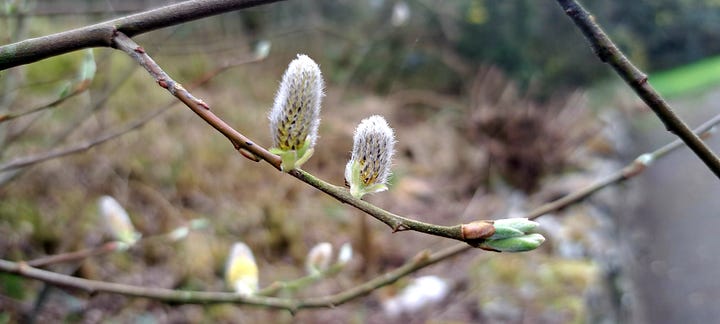
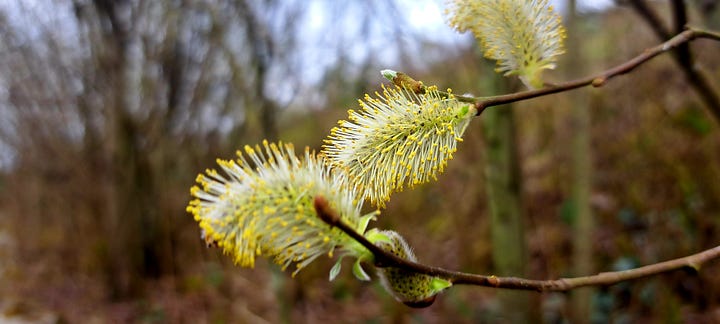
Through its associations with water and river banks, and also with milk, the willow can thus be linked to Boan and the River Boyne, and the formation of the Milky Way, which is a lovely concidence, as last week I read my own version of the Goddess Boan’s story on Marisa Goudy’s Knotwork Storytelling Podcast, and you can listen to it here:
the king with a horse’s ears
For a tree that is so prevalent in the Irish landscape, there appears to be only one story about it in the cycles of Irish myth, and it concerns a king whose honesty and secrecy is challenged by nature.
Labhraidh Loinseach was the king of Leinster, and he kept a secret: beneath his long curling hair he had a pair of horse’s ears instead of human ones. Random, I know… but pay attention; how often have I suggested that myths were designed to teach as well as entertain?
Labhraidh would get his hair cut only once a year, after which he had his barber killed, because in early Ireland, only an unblemished man could be king; he didn’t want his deformity to become common knowledge, as there would be a good chance he would be stripped of his power. So he executed his barbers to prevent their tongues wagging. A perfectly acceptable solution. Presumably, those close to him colluded in this secrecy, as such an enigma could hardly be hidden indefinitely. Remind you of any contemporary parallels in the modern world?
Anyway, on one occasion, the chosen barber escaped execution because his poor widowed mother begged the king to spare her son’s life. Surprisingly, Labhraid agreed, on condition the boy held his tongue. However, the poor guy sickened under the weight of his secret and in desperation whispered what he had seen under the king’s hair to a willow tree.
Eventually, the willow tree was cut down to make a harp for Labraidh’s harper, but when he first attempted to play it at the king’s court, the only sound the harp would make was to shout out the king’s secret for all to hear: ‘Labhraidh Loingseach has horse’s ears!’
There are many morals to this odd little story, which is one of the reasons I love Irish mythology so much.
song and dance
In the story you’ve just read, it is the willow in its reincarnation as a harp that exposes the king’s brutality and duplicity. But this is not the only connection between willow and music.
Brian Boru’s harp is the oldest harp still extant in Ireland, and was made of both willow and oak. However, the attachment to Brian himself is a fabrication, as the harp has been dated by the British Museum to the fourteenth century, long after Boru was dead.
The Brian Boru harp is now a bit of a composite, having been taken apart, ‘repaired’, refurbished, updated, and then finally reassembled in what would have been its original, medieval form as it appears now.
But traditionally in early Ireland, the three native species of willow, Goat willow, grey willow and bay willow were all suitable for harp making, although ancient texts did not specify whether one was preferable over the other. Willow was particularly favoured for the sound box because the wood is light and fibrous, giving it that famous strength and flexibility, no doubt useful in dealing with all those vibrations and reverberations. The wood itself is quite soft, meaning that it has the capacity to ‘dampen the small high-frequency harmonics produced by metal strings’,4 the latter development being unique to early Irish harp-making.
Mac Coitir tells us that in Ireland, it used to be believed that by placing a willow branch or rod above the lintel of a door, the house’s occupants could be compelled to dance without cease. Perhaps this curious little custom arises from the grace of a willow in the grip of the wind, or perhaps it is more to do with the music of fingers strumming the strings of a harp, who can say?
the tree of life
In Irish mythology, there is no world tree, or tree of life. However, Mac Coitir speculates that the willow comes as close to it as any. This is because it has such an indomitable spirit. You can cut it back to the smallest of stumps in autumn, and yet by the time spring rolls around, it is completely reborn and renewed. There is a powerful lesson in this. In these particularly brutal times we are finding ourselves in, let’s be like the willow.
winter willows: a poem
I’m going to finish this text with a reading of a poem I once wrote, inspired by the stark beauty of willow trees in winter. Btw, I only use the term ‘my’ to denote those willows growing around this patch of land I inhabit. They belong truly and wildly only to themselves.
If you can hear a faint tapping in the background, my appologies. We have a delinquent blue tit who is convinced the bird he can see reflected back at him in the window is an intruder that must be vanquished. I have tried everything to persuade him otherwise, to no avail. Hopefully, when his chicks hatch, he will be too busy feeding them to have time for this aggression.
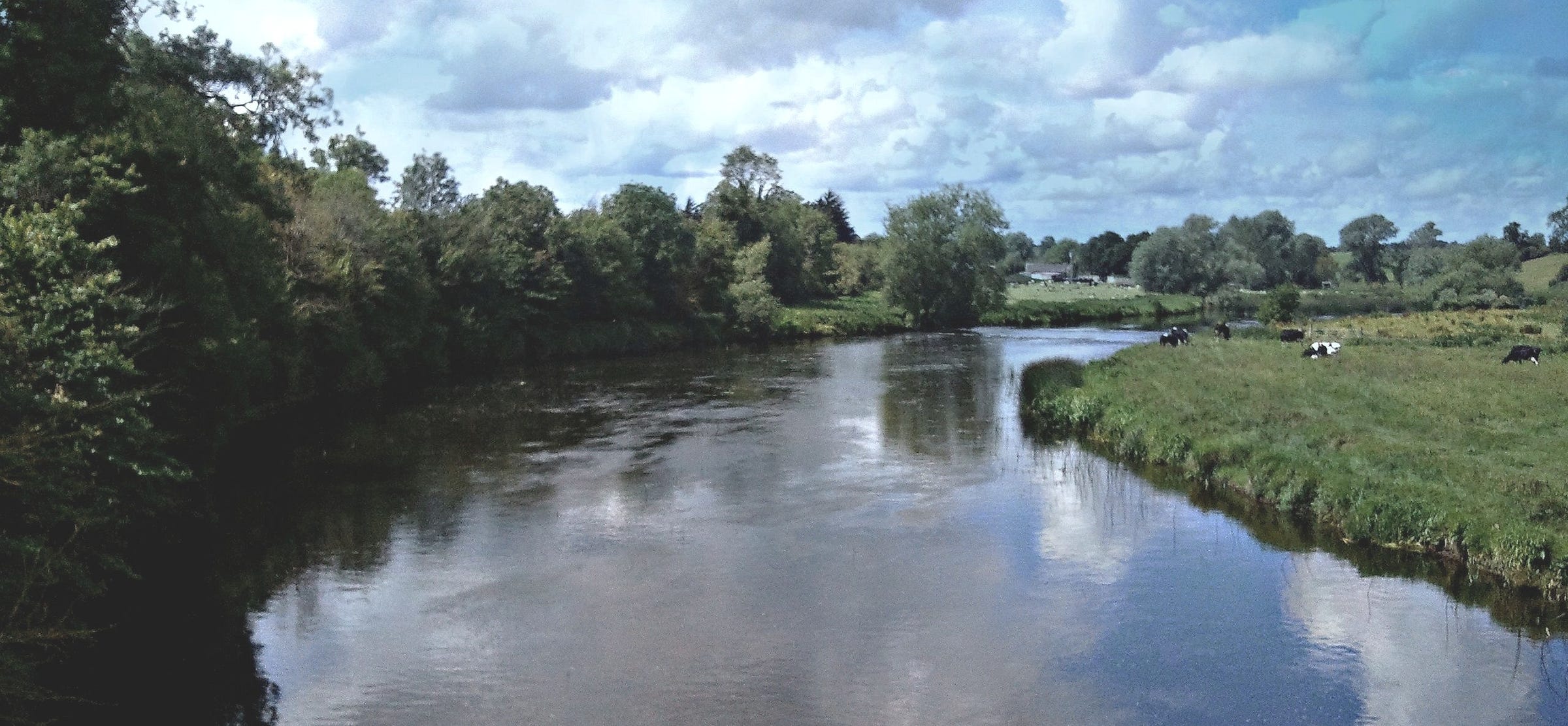
YOU MIGHT LIKE:
OBOD has a lovely article all about the Willow, which goes into a lot of detail on magical, spiritual, medicinal and practical uses, as well as some fascinating symbolism and mythology.
The recently dearly departed John Willmott of Nature Folklore substack also has a really fascinating series of articles on the willow; this one is my favourite.
Nazarov, M. I. (1970) [1936]. Komarov, Vladimir Leontyevich (ed.). Flora of the U.S.S.R. Vol. 5. Translated by Landau, N. Jerusalem: Israel Program for Scientific Translations. p. 21, quoted Wikipedia.
Nial Mac Coitir. Ireland’s Trees - Myths, Legends and Folklore, The Collins Press, 2003.
I fell down a lovely rabbit-hole researching Irish harps and willows which occupied me for several pleasant hours; you can read more here: Wire-Strung Harp, also Simon Chadwick, and Heritage Week: The Harp - The Story of the Irish National Instrument, to get you started.






What a lovely song to start my day with. I fully enjoyed this post and your reconnection to the wilow!
What a lovely way to start a Spring morning. I thoroughly enjoyed this piece of work which transported me right back to my childhood when we used to climb the willow trees which ran alongside the railway track at the bottom of our estate. With their low hanging branches, we could lounge for hours listening to the sound of the wind rustling through the leaves, reading books and making decorations from the twigs and soft, furry catkins. I feel called to reconnect with the willow, which in my memories is reminiscent of Enid Blyton's Magic Faraway Tree, a story I was so enchanted by when I was little. Thanks for sharing further reading to accompany your musings.